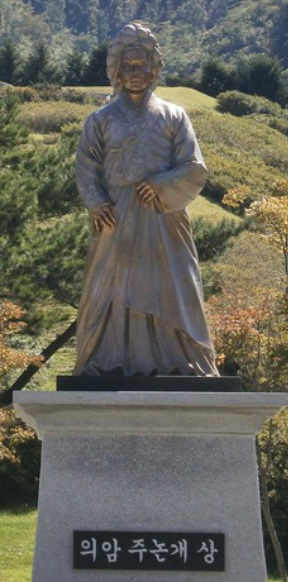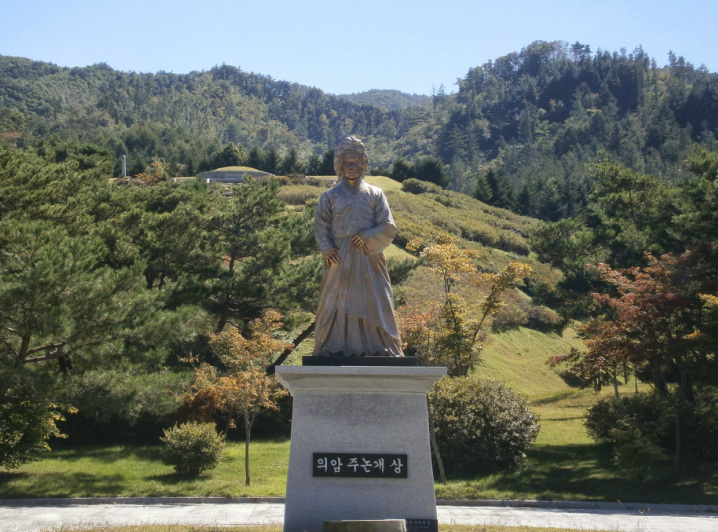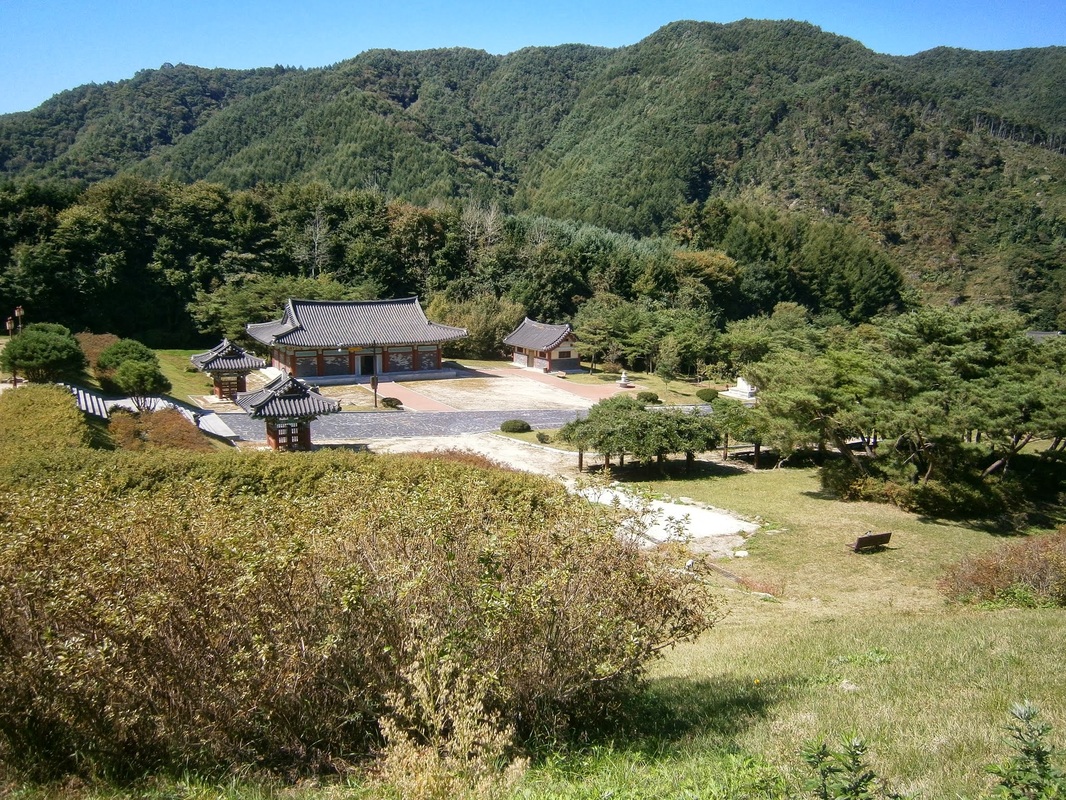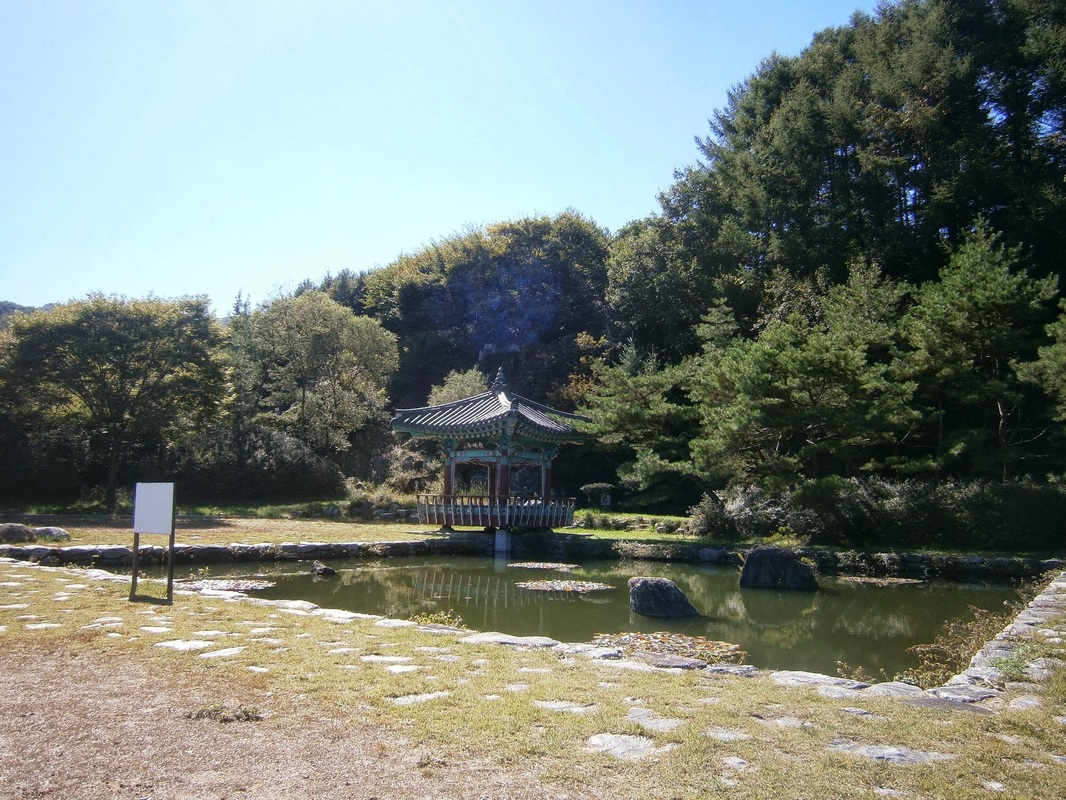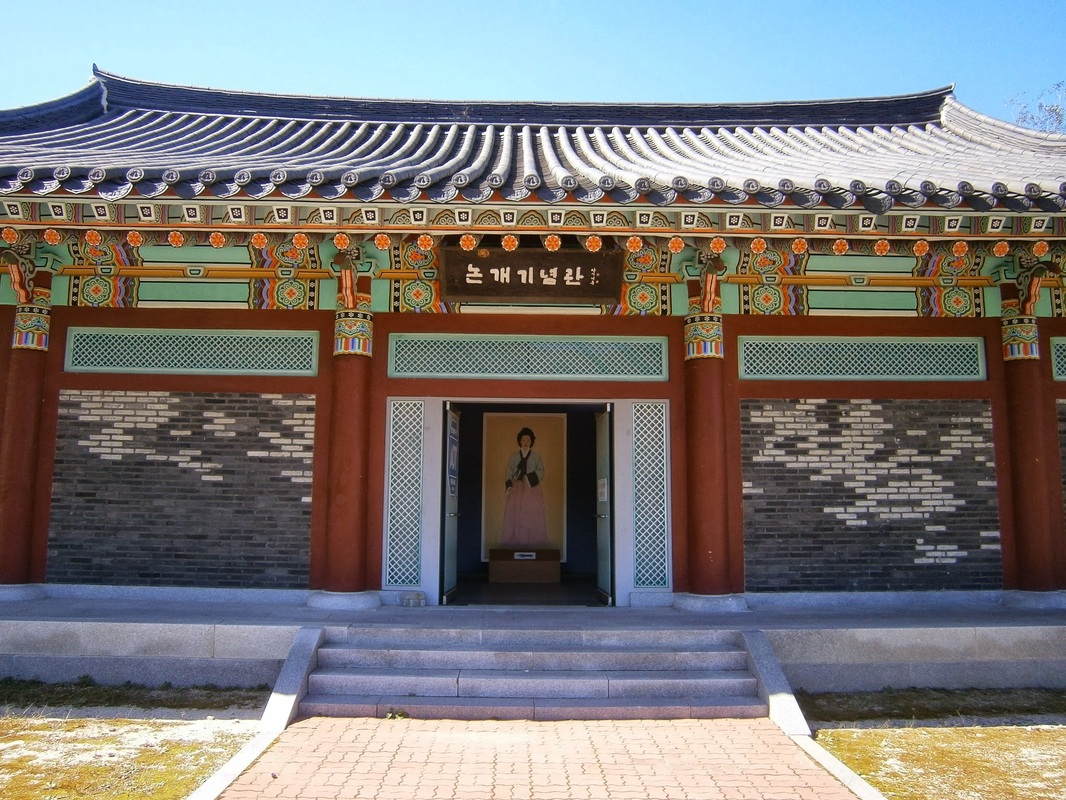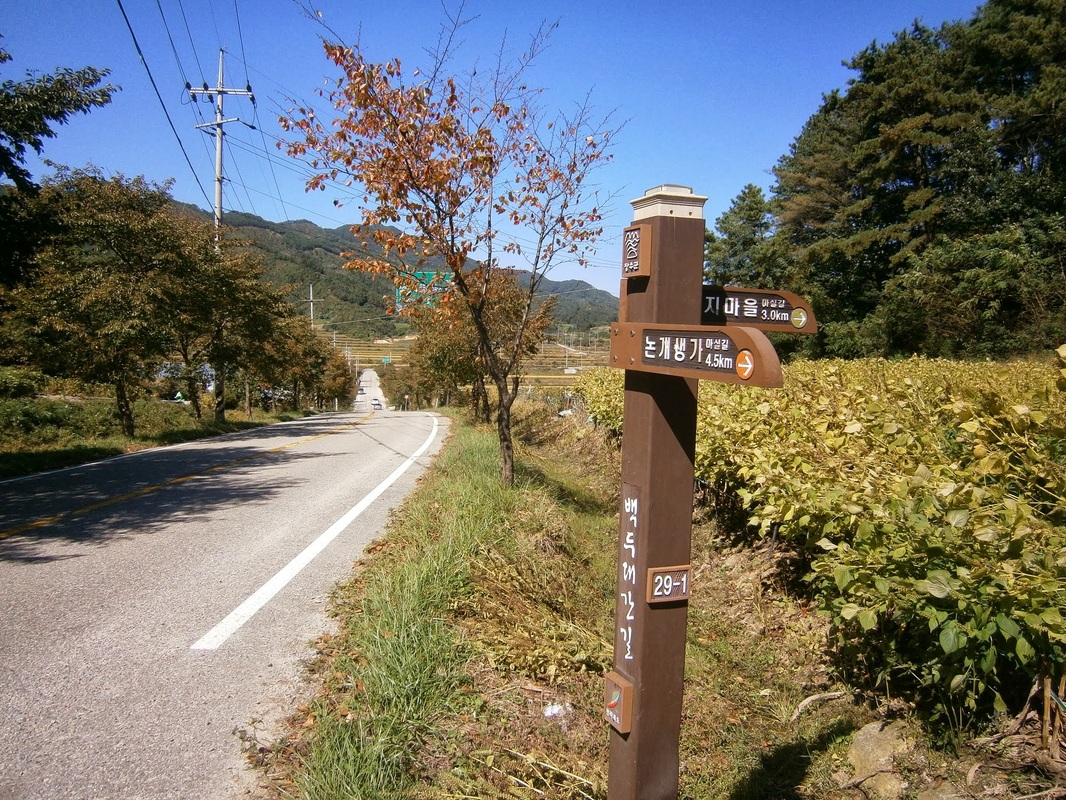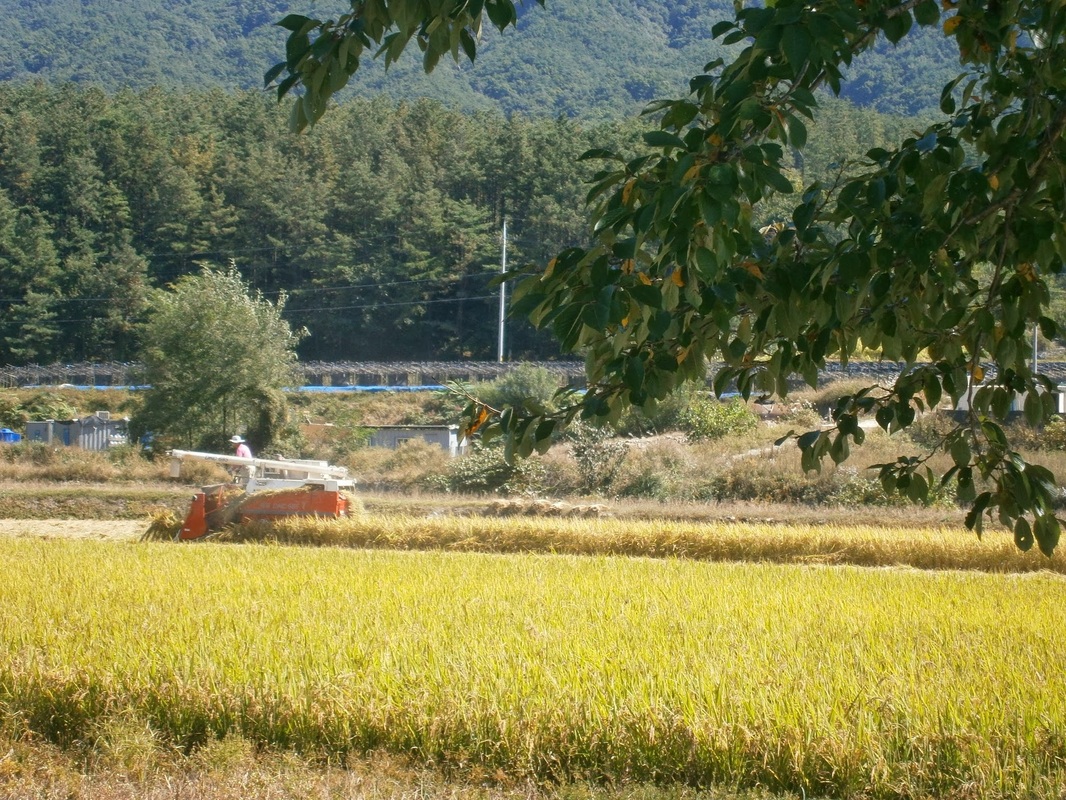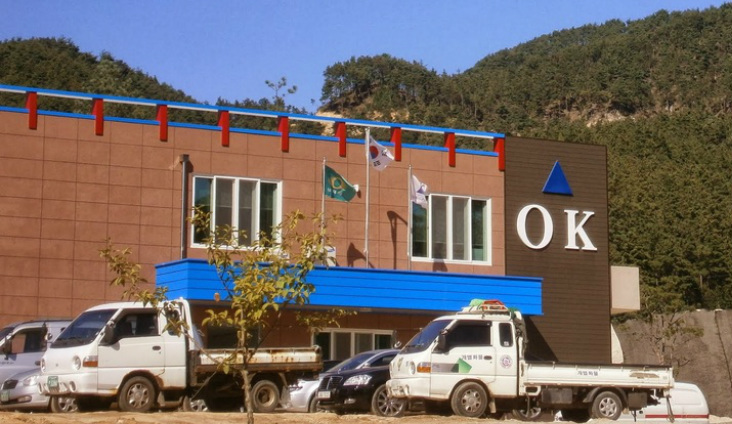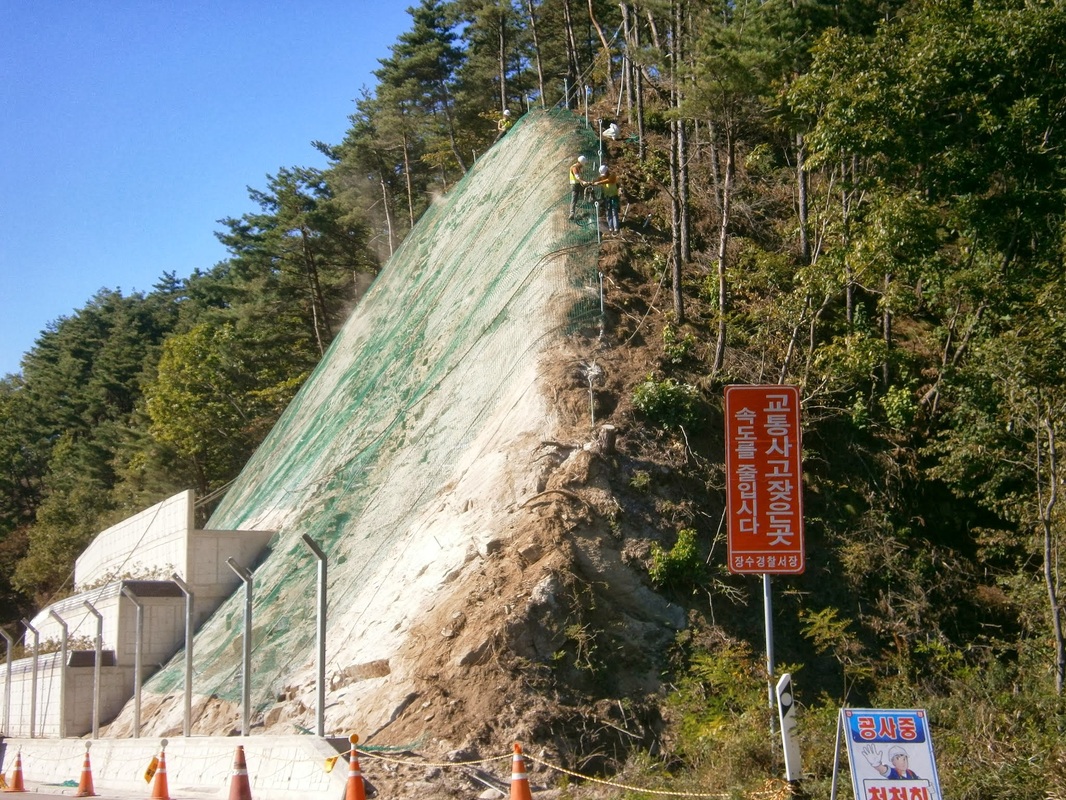The shrine was mostly empty at midday on a non-holiday Friday, which was good; it was also free, which was better still. The grounds were very large and well-kept.
__________________________________________________
Who was Nongae? She was a patriotic assassin.
The Japanese, it seems, conquered the Korean city of Jinju in 1593. Afterwards, they held a victory celebration, and they compelled the local gisaeng to join in (a gisaeng was a Korean female entertainer like a Japanese geisha). One of these, named Ju Nongae, won the affection of a top Japanese general. During the victory festivities, the general and his entourage (including Nongae) moved to a scenic spot on a high rock overlooking the river. Suddenly, Nongae embraced the conquering general around the neck and threw herself over the edge, which took him down as well. They both drowned.
Earlier this year, I also happen to have visited the very rock on which this murder-suicide happened. The rock is called “Uiam” within Jinju Fortress. (Nongae is given the title “Uiam” in honor of her act.)
Nongae is a symbol of patriotic loyalty for Koreans.
__________________________________________________
Here are some pictures from the large, open grounds of the shrine:
Everyone agrees that Nongae killed the Japanese general by jumping off the high rock in Jinju in 1593 (when she was only 19 years old), but Jinju historical markers and explanatory signs, as I recall, said she was just a lowly gisaeng motivated by spontaneous patriotism. The explanatory messages in Jangsu, though (her birthplace-shrine, pictured above) say she was a married woman who disguised herself as a gisaeng in order to carry out the assassination.
The Jangsu shrine really gives the impression that Nongae was a saintly yangban aristocratic married woman, the archetype of Korean female virtue. The Jangsu Shrine signs I read, in English translation, said that she felt enraged when her husband died in the battle for Jinju and thus began preparations for the assassination. (Actually, one sign I saw in her birthplace-shrine claimed that her husband hadn’t died in the battle. He had survived the onslaught, it said, but committed suicide at the end rather than surrender. — If you’re going to deify this hypothetical husband, he can’t have simply been “killed by the Japs”, now, can he? He’d have to have been too good, too pure, for such a crude ending.)
The Jangsu version seems — forgive me, Korean readers (if any), for I mean no offense by this, but — It seems to be a case of “a hometown referee calling the game”, if that makes sense. This saintly-yangban Nongae image, with the husband too noble to have died by Japanese hands…It’s creeping closer and closer to that kind of purely self-serving nationalistic mythologizing/deification that the Kim Il-Sung “mythology-apparatus” cranks out in the North.…..
After leaving the shrine, I continued walking on the roads to rejoin the trail at Yukship Pass. On the way, I saw this:
Closer to the pass, I saw construction workers fencing-off a rocky area above a road:
Road-walking is easier on the leg muscles but can be harder on the nerves, as cars and trucks whiz by. A little past the construction scene above, a man pulled alongside and offered me a ride for the final few kilometers to Yukship Pass, I accepted. After getting some food at the pass, I was soon back into the nether regions of the Baekdu-Daegan Trail….
[This was written at a motel in Chupung Pass on October 16th and finished on October 25th in Jeomchon]

